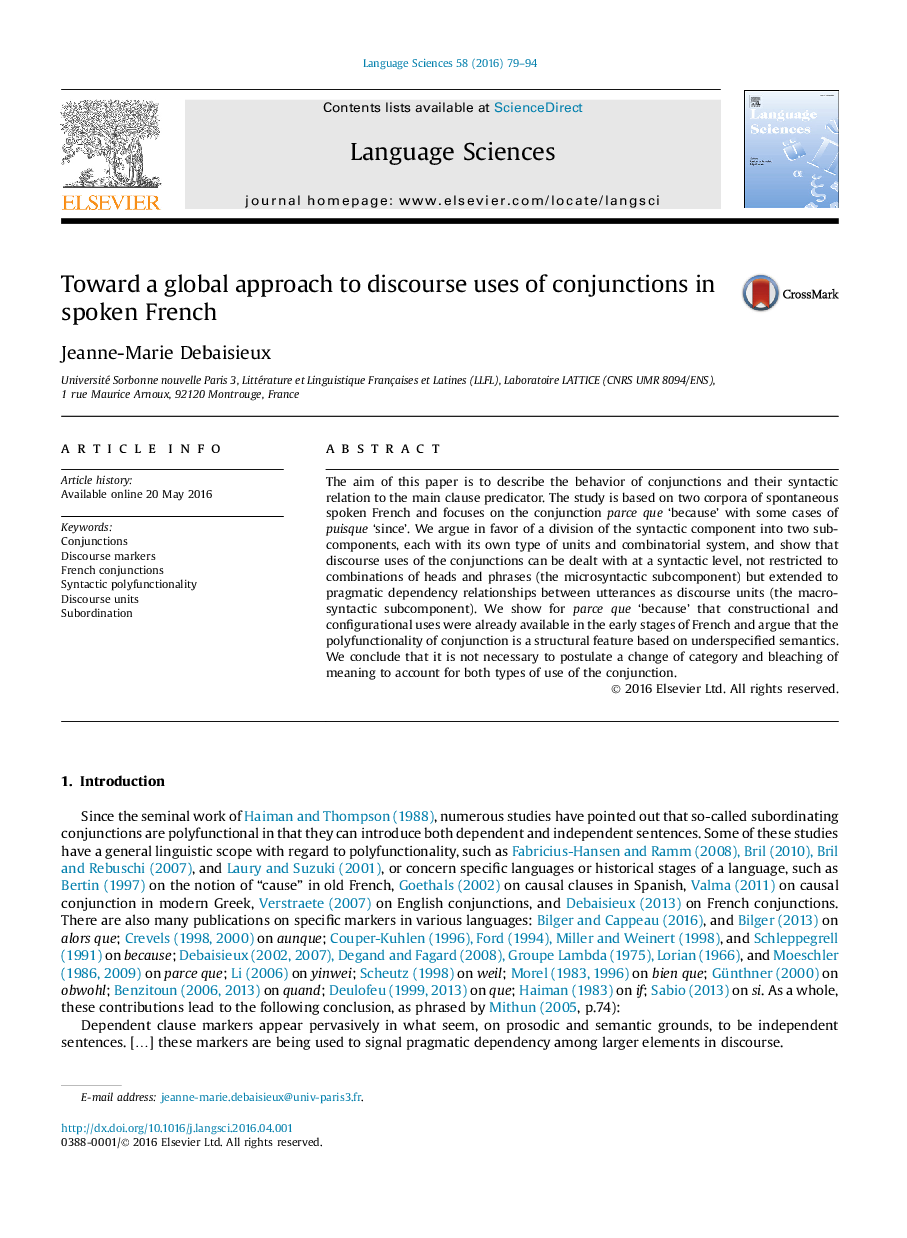| Article ID | Journal | Published Year | Pages | File Type |
|---|---|---|---|---|
| 5124580 | Language Sciences | 2016 | 16 Pages |
â¢Conjunctions in Spoken French are used to built grammatical dependency networks as well as discourse patterns (configurations).â¢A syntactic framework based on two subcomponents is presented to account for this syntactic polyfunctionality.â¢Two types of configurations involving conjunctions are defined.â¢The grammatical and the discourse uses of conjunctions have emerged contemporaneously in French.â¢Semantic underspecification is the triggering factor of the polyfunctionality of conjunctions.
The aim of this paper is to describe the behavior of conjunctions and their syntactic relation to the main clause predicator. The study is based on two corpora of spontaneous spoken French and focuses on the conjunction parce que 'because' with some cases of puisque 'since'. We argue in favor of a division of the syntactic component into two subcomponents, each with its own type of units and combinatorial system, and show that discourse uses of the conjunctions can be dealt with at a syntactic level, not restricted to combinations of heads and phrases (the microsyntactic subcomponent) but extended to pragmatic dependency relationships between utterances as discourse units (the macrosyntactic subcomponent). We show for parce que 'because' that constructional and configurational uses were already available in the early stages of French and argue that the polyfunctionality of conjunction is a structural feature based on underspecified semantics. We conclude that it is not necessary to postulate a change of category and bleaching of meaning to account for both types of use of the conjunction.
